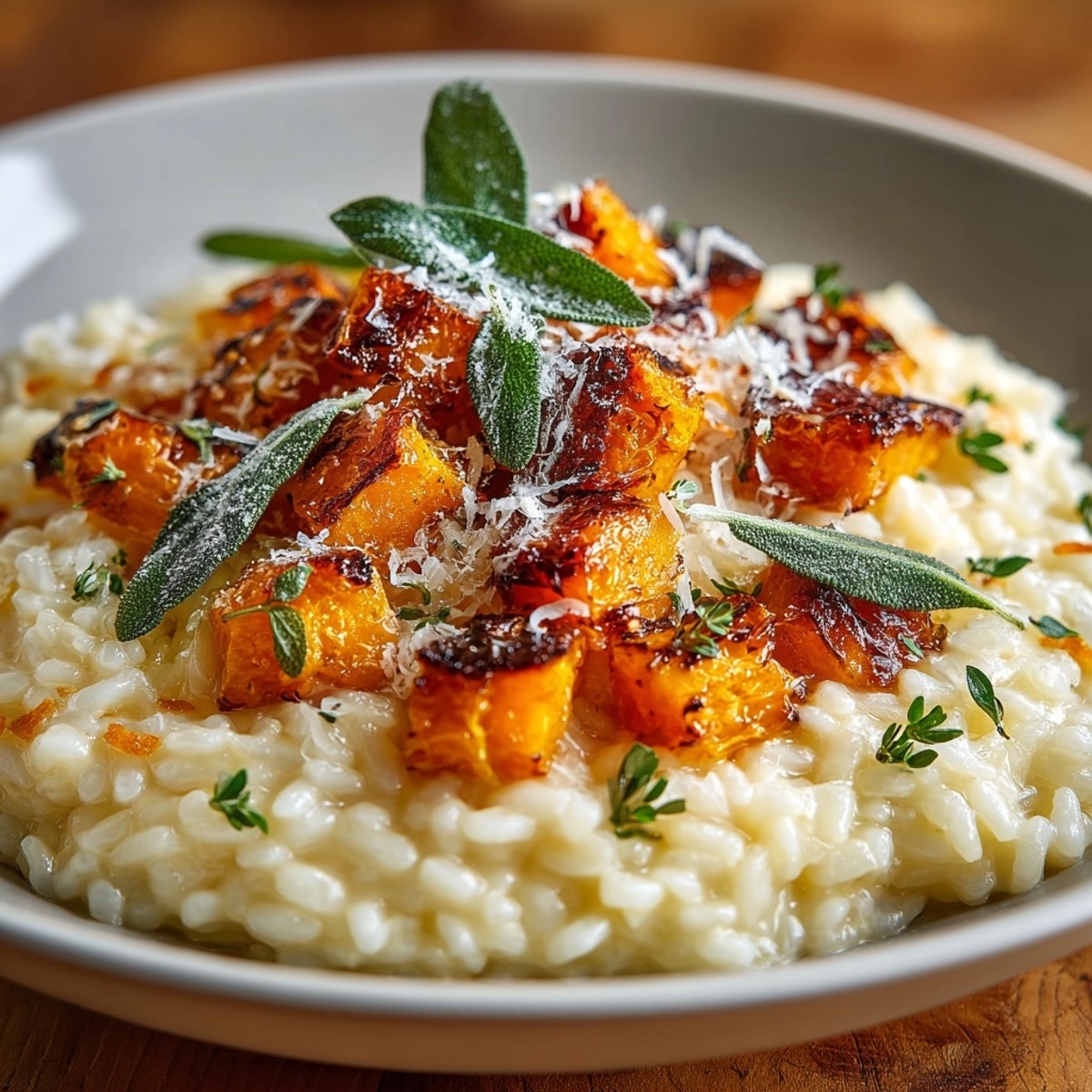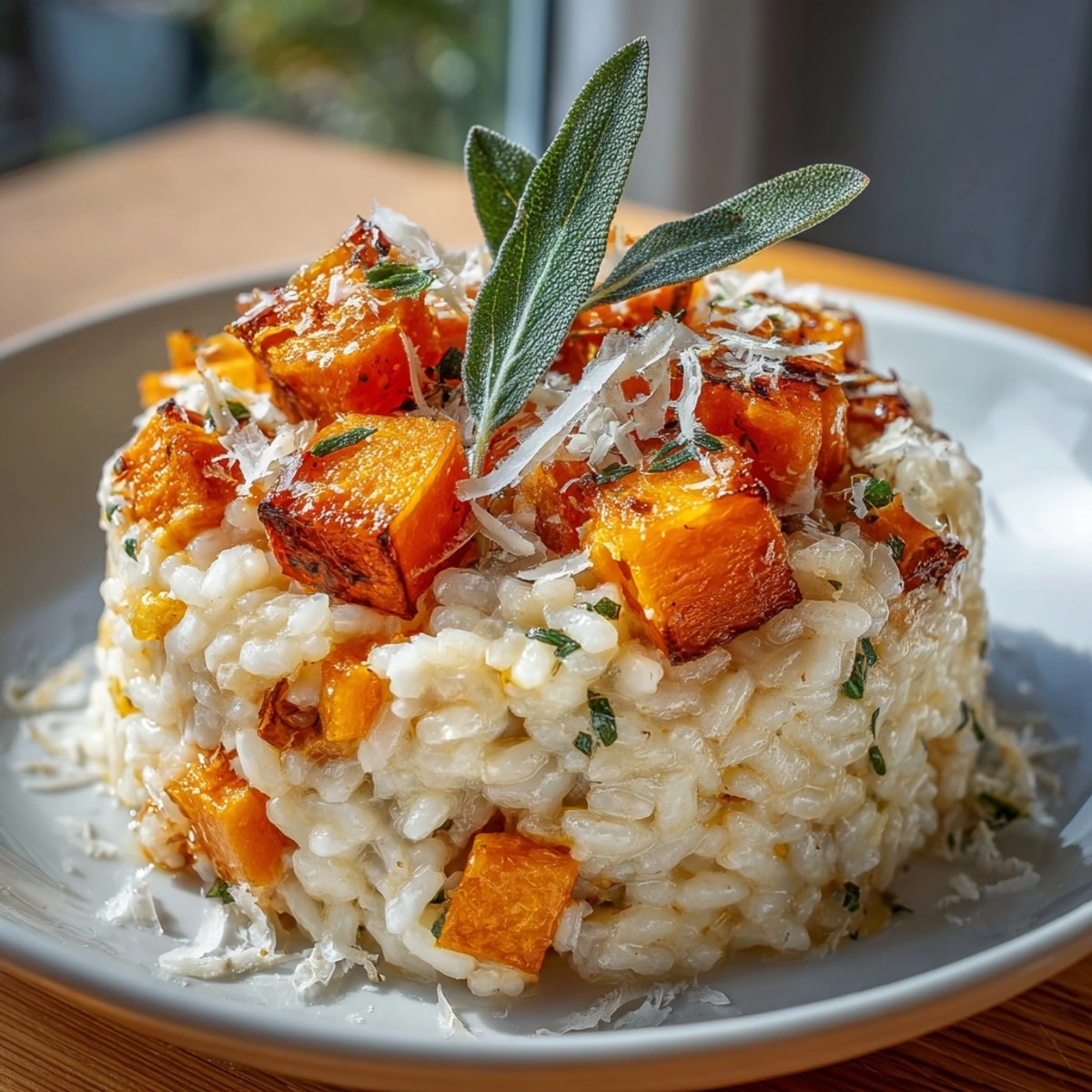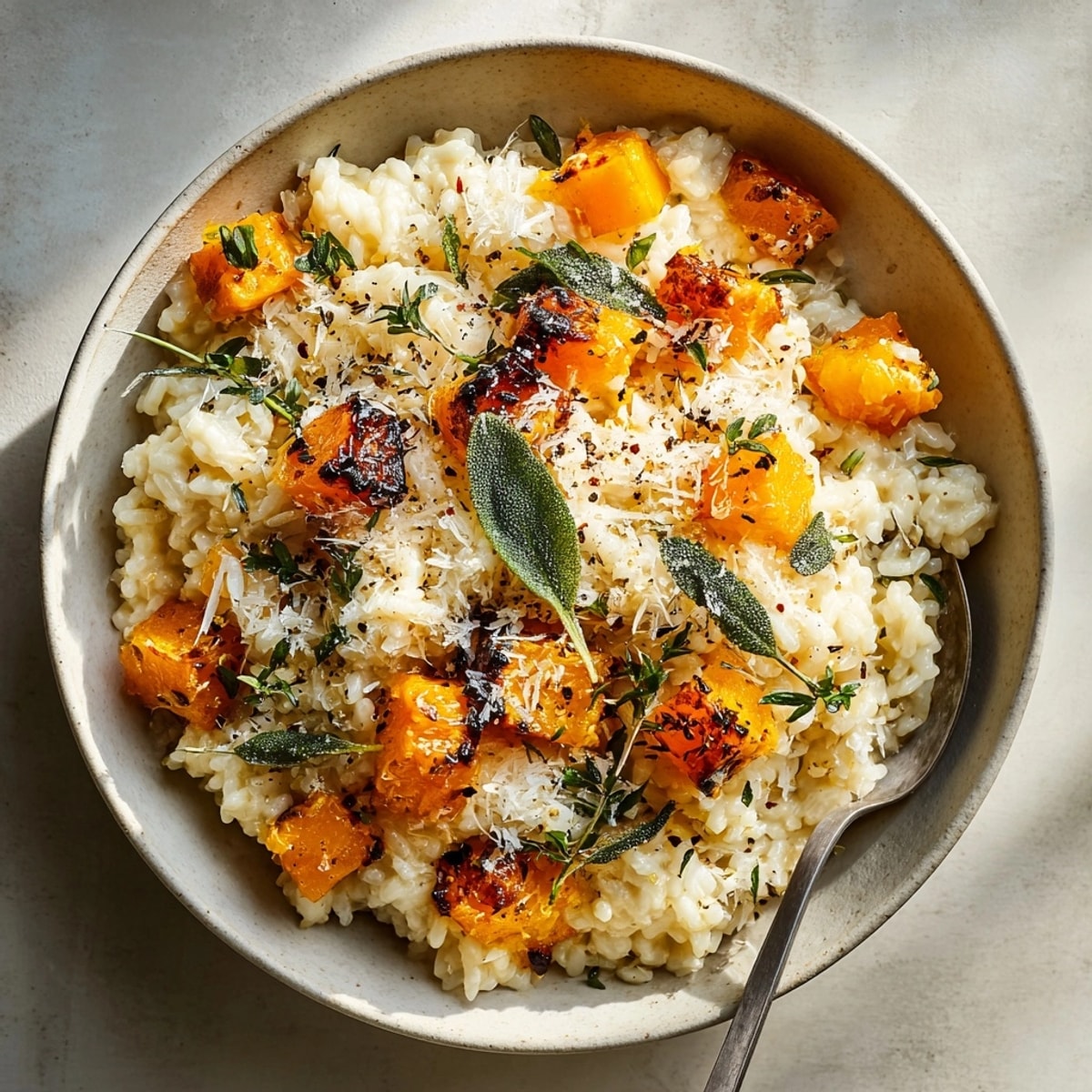 Save
Save This creamy roasted pumpkin and sage risotto transforms simple ingredients into a bowl of autumn comfort. The sweet caramelized pumpkin melds perfectly with aromatic sage and rich Parmesan for a restaurant-quality dish you can easily make at home.
I first made this risotto during a particularly chilly October evening when I needed something comforting yet impressive for unexpected dinner guests. They were so enchanted by the flavors that it's now my signature dish for fall gatherings.
Ingredients
- Arborio rice: provides the essential starchy creaminess that defines a proper risotto
- Fresh sage leaves: offer an earthy aromatic quality that perfectly complements the sweetness of pumpkin
- Butternut or Hokkaido pumpkin: adds natural sweetness and beautiful golden color
- Dry white wine: deglazes the pan and adds subtle acidity to balance the richness
- Parmesan cheese: creates that unmistakable umami finish that makes risotto irresistible
- Vegetable broth: infuses the rice with flavor while creating the perfect texture
- Unsalted butter: enriches the finished dish with silky smoothness
- Onion and garlic: form the aromatic foundation that supports all other flavors
Instructions
- Roast the Pumpkin:
- Dice pumpkin into uniform 1cm cubes for even cooking. Toss thoroughly with olive oil ensuring each piece is coated which promotes caramelization. Spread pieces in a single layer with space between them to avoid steaming. Roast until the edges turn golden brown and the flesh yields easily to a fork about 25 minutes.
- Create the Flavor Base:
- Use a wide heavy bottomed pan to ensure even heat distribution. Melt butter slowly to prevent burning then add onions cooking until they become translucent but not browned. Add garlic only after onions are soft to prevent it from burning and turning bitter. This aromatic foundation will perfume the entire dish.
- Toast the Rice:
- Add dry Arborio rice to the pan and stir constantly for a full two minutes. You'll notice the grains becoming slightly translucent around the edges while the centers remain opaque. This crucial step helps the rice release its starch gradually during cooking resulting in that signature creamy texture without becoming mushy.
- Begin the Absorption Process:
- Pour in room temperature wine rather than cold to maintain the cooking temperature. Stir constantly until the wine is nearly completely absorbed and you can drag your spoon across the bottom of the pan leaving a momentary trail. This indicates readiness for the broth additions.
- Develop the Creamy Texture:
- Add warm broth one ladle at a time stirring frequently between additions. The heat should be medium low maintaining a gentle simmer not a boil. This slow addition process takes patience but creates the perfect texture. Test rice occasionally by tasting a grain should be tender but with slight resistance at the center.
- Incorporate the Pumpkin:
- Gently fold in the roasted pumpkin pieces and chopped sage leaves. Allow some pumpkin pieces to break down into the risotto while leaving others intact for textural contrast. The heat will release the essential oils in the sage leaves infusing the dish with its distinctive aroma.
- Finish with Enrichments:
- Remove from heat before adding final butter and Parmesan as the residual heat will melt them perfectly without breaking the emulsion. Stir vigorously to incorporate creating a glossy finish. The covered resting period allows flavors to meld while maintaining the ideal serving temperature.
- Create the Garnish:
- Fry sage leaves quickly in hot butter or oil just until they crisp but before they brown. They should be fragrant and rigid enough to snap when bent. Place on paper towel briefly to absorb excess oil before using as garnish.
 Pin it
Pin it The first time I made this dish I was intimidated by risotto's reputation for being fussy. But I discovered the meditative quality of standing at the stove stirring and watching the transformation happen gradually. Now I find making risotto to be one of the most relaxing cooking experiences especially with a glass of the same wine I use in the recipe.
Perfect Pairings
This risotto works beautifully as a main dish but also complements roasted chicken or grilled pork tenderloin. For a complete vegetarian meal serve with a simple arugula salad dressed with lemon vinaigrette. The peppery greens cut through the richness of the risotto creating a balanced plate.
A crisp white wine like Pinot Grigio or Sauvignon Blanc provides the perfect acidic counterpoint to the creamy texture. If serving as a first course consider smaller portions followed by a simple protein main to create an elegant Italian inspired menu.
Seasonal Variations
In spring replace pumpkin with fresh asparagus and peas keeping the sage or swapping for mint. Summer calls for corn and cherry tomatoes with basil instead of sage. Winter variations work beautifully with roasted butternut squash and a pinch of nutmeg or cinnamon for warmth.
The basic technique remains the same regardless of season making this a versatile recipe to keep in your repertoire year round. Just follow the produce calendar and adjust herbs accordingly.
Troubleshooting Tips
Risotto too thick Add a splash more warm broth just before serving
Rice still too firm Continue cooking with additional broth in small amounts
Flavors seem flat Add a squeeze of lemon juice and more freshly ground pepper
Make Ahead Options
While risotto is best served immediately after cooking you can prepare components ahead of time. Roast the pumpkin up to two days in advance and refrigerate in an airtight container. You can also prepare the dish up to the halfway point of adding broth then cool quickly and refrigerate.
To finish partially cooked risotto bring it back to temperature with warm broth and continue the cooking process adding more liquid as needed. The total cooking time will be slightly shorter when restarting with partially cooked rice.
 Pin it
Pin it This risotto is a delightful and comforting dish that comes together beautifully with a little patience. Enjoy the process and savor the delicious results.